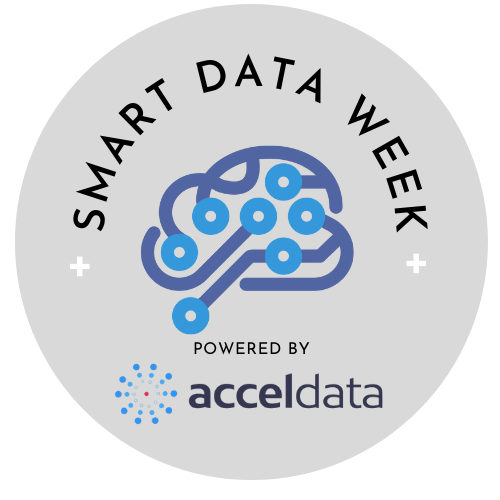With the unprecedented technological disruption in application and data functions, DataOps is an antidote to data-related challenges.
DevOps changed the game bringing an agile, automated approach to application development and cohesively structuring IT operations. While DevOps is now a business mainstay, a similar DevOps-esque approach to data management is having a moment.
It’s DataOps.
Opening data access within an organisation, DataOps takes care of the grunt work of data engineers, which include integrating with data sources, performing transformations, converting data formats, and delivering data to its required destination.
More than ever, organisations now have to manage torrents of data that are critical to their success. An average organisation manages close to 5,000 datasets and processes data in various formats with varying frequency — and the heterogeneity of data is not slowing down. The total global data storage is expected to exceed 200 zettabytes by 2025, with half of it stored in the cloud. The estimated 31 billion Internet of Things (IoT) devices currently in use are expected to grow to 75 billion by 2025, and by the end of this decade, 90 per cent of the world’s population will be online and generating data.
Also Read: Are Companies Getting The Cloud Payback?
The current problem
Against such a backdrop, enabling personalisation in customer experience, detecting data breaches, rogue datasets propagating in silos, optimising supply chains, and companies’ data technology often isn’t up to the demands put on it.
Traditional, siloed data or intelligence-based analytics hasn’t delivered on its promised value because the insights generated by the data are not translated quickly enough. It takes so long to process and analyse that when the insights are finally in hand, it’s often too late to act upon them. Also, since the volume, velocity, and variety of data are increasing, organisations need a new way to manage this complexity and maximise data efficiency and repeatability of data work.
Over the past decade, advanced analytics has become a top priority across industries. Many organisations recognise its value and have started to put analytics in place.
However, many have not been able to unlock the full potential, mainly because of the lack of capabilities and repetitive processes needed to roll out new algorithms and analytics models. Many organisations have pointed to DataOps as the remedy. A recent survey found 70 per cent of organisations have plans to hire in DataOps to improve data quality and reduce the cycle time of advanced analytics.
Nowadays, organisations implement data architectures, such as data lakes and next-generation tooling for advanced analytics. While it eases the building of new algorithms, many present obstacles as well. Often, models are not documented and therefore not scalable, and testing models, which is handled manually, is time-consuming.
Data preparation takes time, and models must be adjusted during testing and production to account for different configurations and technologies.
At the same time, while relying on best-in-class software makes companies more productive, it can make leveraging or analysing data cumbersome with critical data, including customer data, marketing data and sales productivity data, locked in by myriad SaaS providers.
For organisations struggling with these challenges, DataOps comes to the rescue. Its streamlined process encompasses tool chain and workflow automation when data enters the systems from sources and keeps changing with time to feed the downstream systems for transformation, models, visualisations and reports. Generation of new code, tests, models and features to the existing code/tools that play with the data also happens simultaneously, speeding up analytics and strengthening the feedback mechanism of the pipeline.
DataOps is an enablement tool — from data ingestion through processing, modelling, and insights for the end user. It empowers the provisioning of production data through automated data ingestion and loading from multiple sources. The use of automation for data transformation reduces error-prone steps in the pipeline, continuously improves analytics operations and performance, early detection of data inconsistencies, and allows for faster deployment and releases.
Also Read: Small Is The New Big
For organisations keen to be data-driven, using artificial intelligence (AI) and machine learning (ML) tools and techniques, DataOps allows them agility and the flexibility to move quickly with controls in place, enabling them to be competitive.
Organisations that embed DataOps can achieve a range of improvements.
Response time to fix bugs and defects: A collaborative approach to fixing bugs and defects dramatically reduces the time it takes to remedy
Efficiency and slow responses: Automated controls improve the efficiency of an organisation. Immediate feedback slows the team to better focus their processing on the actual goals of the enterprise. It breaks down the silos between what has traditionally been viewed as data backend that produces usable data and data frontend that derives value from data.
Goal Setting: Provides both development teams and management with real-time data on the performance of their data systems. By enabling more users within the data systems, organisations can realise the economic benefits of becoming data-driven.
Gain insight: Enables organisations to experiment and gain insight from trusted sources of data to prototype theories rapidly and then transition IT processes. Provide metadata alongside the data to provide transparency and trust
It also brings a comprehensive change along the key dimensions of people — skillset and culture toward the continuous usage of data, process — an end-to-end revision of processes for streamlined and fully automated deployment, and technology — automation of the integration and deployment pipeline for models.
As a result, it brings a transformative change, fostering collaboration among data scientists, engineers, and technologists so that every team is working in sync to use data efficiently, effectively and in less time. This visibility and coordination of different teams lead to accurate analysis, better insights, improved business strategies, and higher profitability. It accelerates the time to value from data by enabling teams to access real-time data and adjust their business decisions based on the results.
Adjustments across people, processes, and technology can reduce time to market, enhance productivity, and cut IT costs.
As volume, velocity, and variety of data increase, new tools and processes are needed to extract insight. IDC expects the volume of data created to grow to 163 zettabytes by 2025. Today’s tools, processes, and organisational structures aren’t equipped to handle this massive increase in data inputs and the increasing value expected from its output.
As more of the workforce has access to this data to perform their jobs, DataOps is breaking down organisational barriers to provide scalable, repeatable, and predictable data flows.









